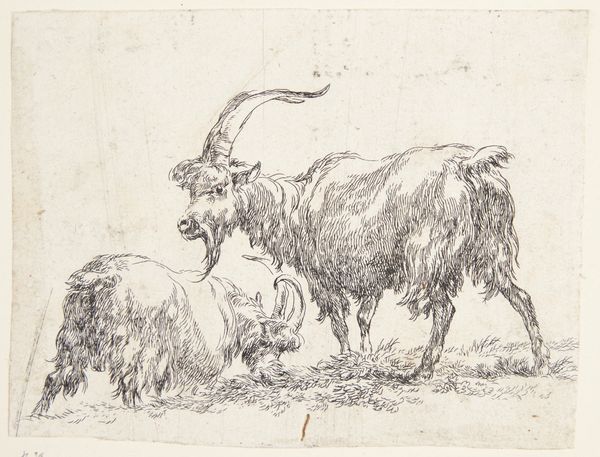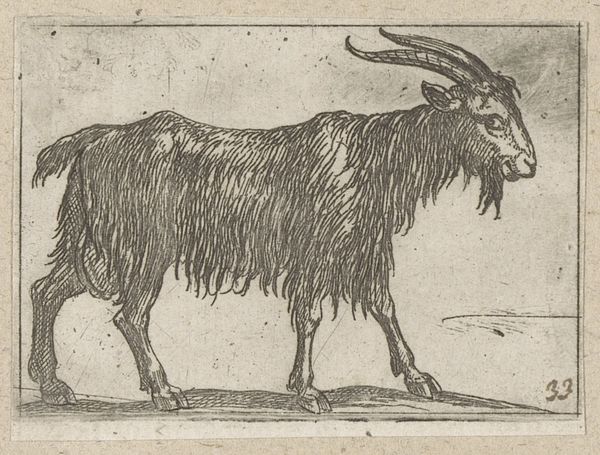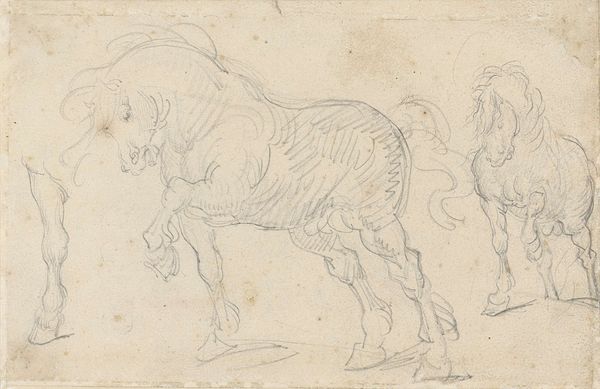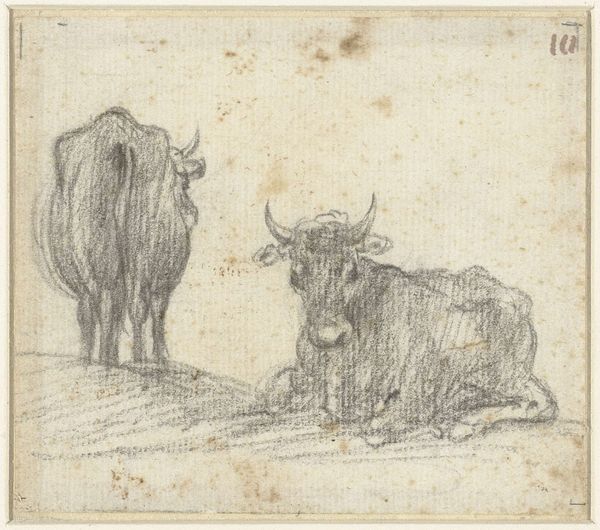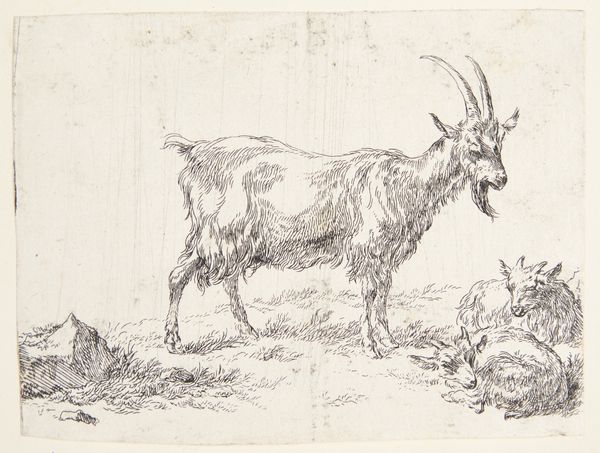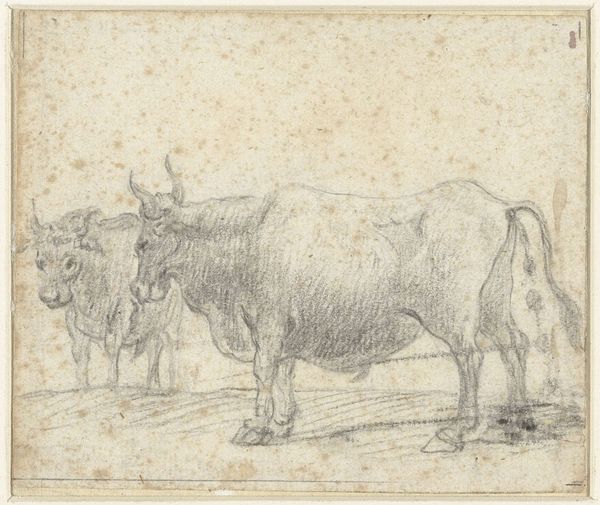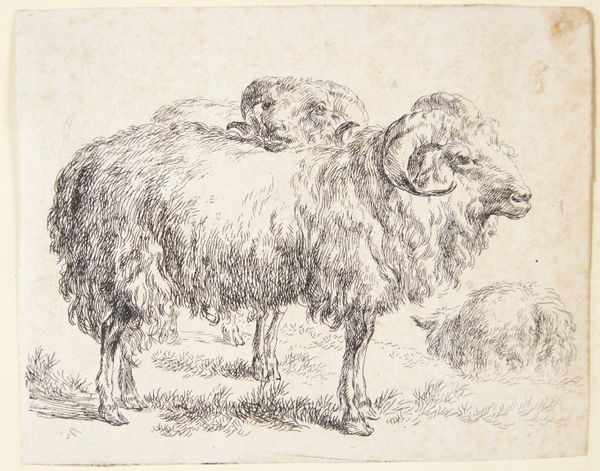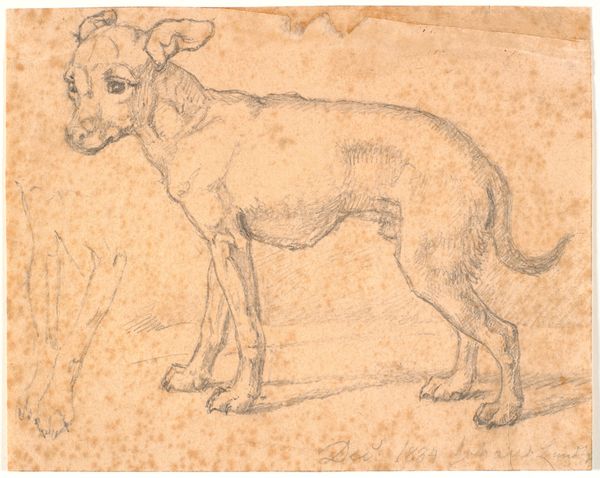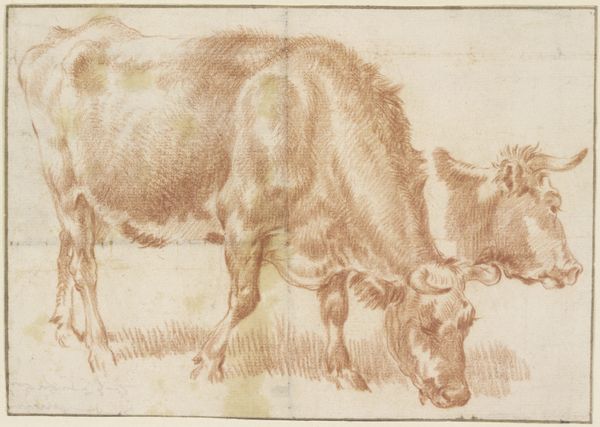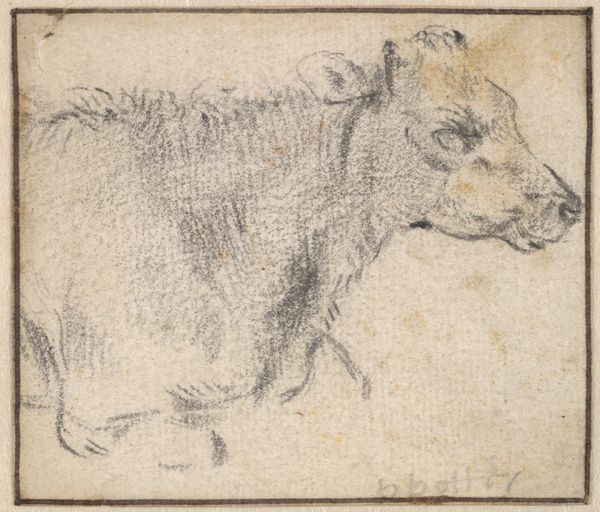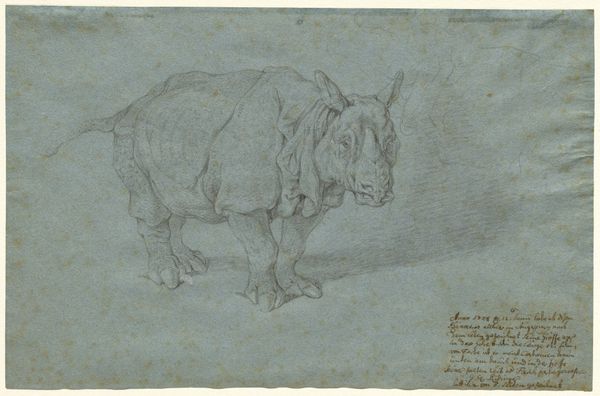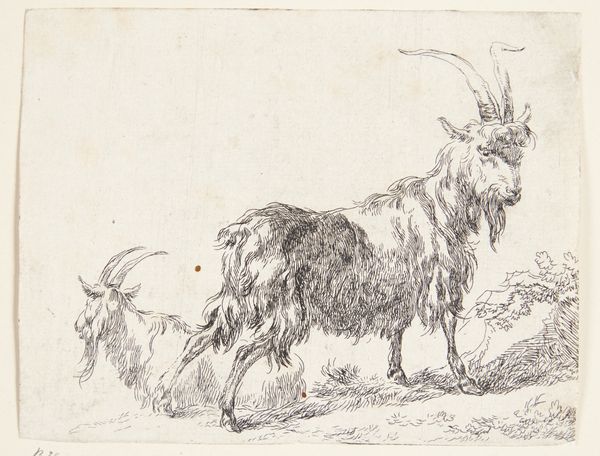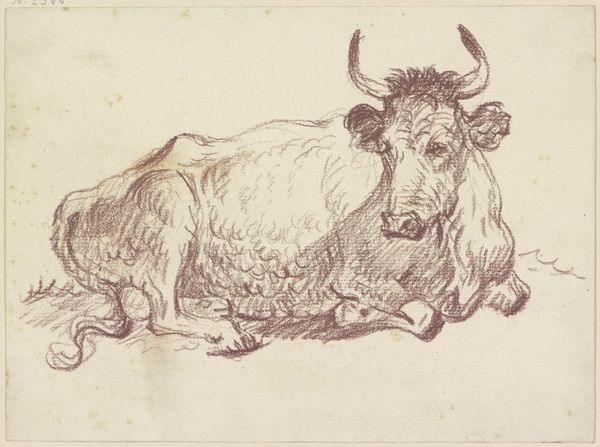
drawing, pencil
#
drawing
#
pencil sketch
#
landscape
#
figuration
#
pencil
#
italian-renaissance
#
realism
Dimensions: 5 1/2 x 7 11/16 in. (14 x 19.5 cm)
Copyright: Public Domain
Curator: There's an interesting feeling of quiet strength emanating from this drawing. It's entitled "Study of Two Bovine Animals," dating from around 1436 to 1470. Editor: You’re right, that comes across immediately. I see almost a stoic quality in the animal's stance. It makes me think of the cultural significance of cattle at that time—as beasts of burden, providers of sustenance... symbols of wealth, even. Curator: Precisely. While the artist's name is not definitively known, its style aligns with the Italian Renaissance interest in realism and classical forms. The animal, rendered in pencil, embodies those interests, its form both solid and full of latent power. Do you sense that the pencil adds something to how the piece looks? Editor: Absolutely, pencil lends an intimacy that, say, oil paint wouldn’t. The visible lines suggest process, almost as if we're seeing the artist think. You can tell a lot about that Renaissance quest to observe nature in it. Curator: It is also a testament to the role of observation in Renaissance art. It isn’t merely copying what is seen; it is about distilling its essence. Note, too, the careful shading. It lends volume to the forms, bringing these creatures to life on the page. Editor: And how fascinating that there are two separate studies here! We see the full form, a monumental presence, then a smaller, concentrated portrait of just the head and horns. Was that second drawing intended to capture the "essence," as you put it? Curator: I suspect so. Or perhaps it was a preliminary sketch to grasp the form of the animal’s head for other paintings. These sketches can take the artwork beyond its simple depiction of the physical animal; a connection to enduring images that have shaped cultures for millennia. It speaks volumes about cultural values and the societal function of art during this transformational era. Editor: Yes, thinking of it now I see not only the image but the cultural weight and meaning that livestock had within communities. I guess for me, it just comes down to an elegant animal and a humble instrument combining in a profound expression.
Comments
No comments
Be the first to comment and join the conversation on the ultimate creative platform.
